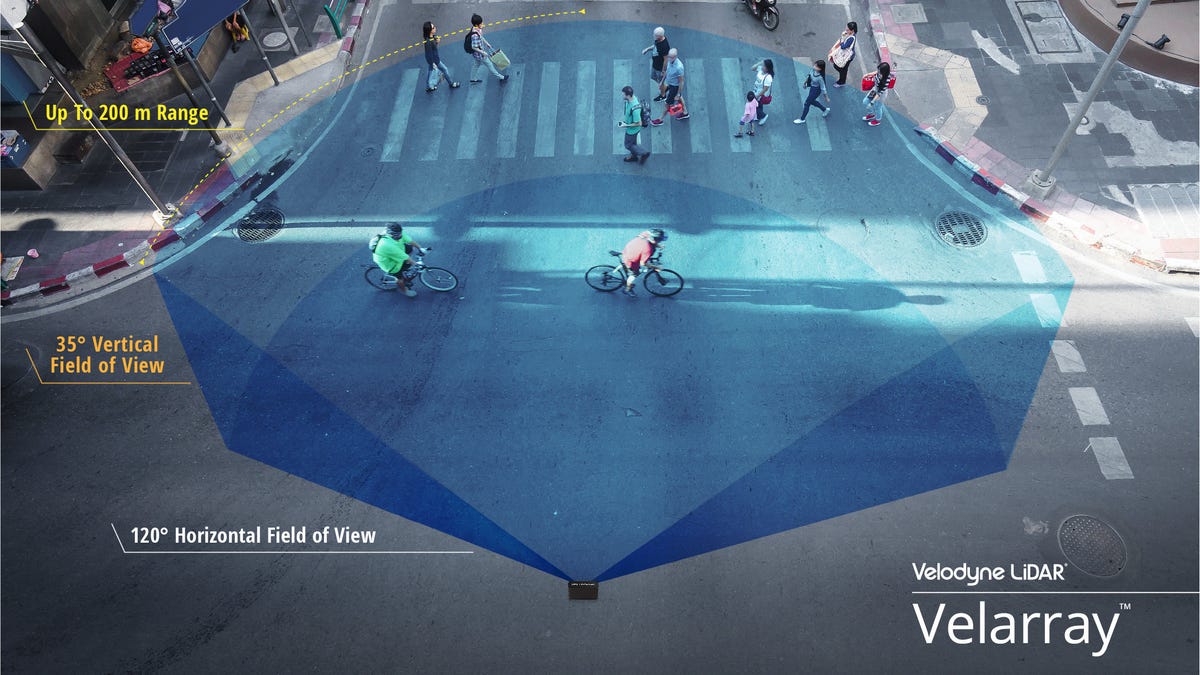Velodyne lidar enters the no-spin zone
Empowering self-driving cars, lidar sensor maker Velodyne announced Velarray, a new lidar sensor using a fixed set of lasers rather than a spinning array.

Laser sensors in Velodyne's new Velarray lidar sensor measure precise distances from all things in front of a self-driving car in a 120-degree arc.
Many self-driving research cars today sport a odd spinning cylinders on their roofs, lidar sensor arrays invented by Silicon Valley company Velodyne. Today Velodyne announced an alternative to these little cylinders on self-driving cars with its Velarray lidar sensor, a smaller module using a fixed array of lasers and receivers, designed for production self-driving cars.
Velodyne's previous lidar products used a set of lasers on a vertical, spinning axle. A single Velodyne lidar of this type maps the 360-degree environment around a car with incredible precision. The new Velarray sensor only senses a 120-degree horizontal arc, so would require multiple units on a single self-driving car. However, its design makes it a better fit for a traditional car design.
The VelArray sensor uses a compact design to fit into the front, rear or corners of a self-driving car.
Automakers, equipment suppliers and even big tech companies like Google are all working towards self-driving cars. The technology promises to reduce or eliminate the tens of thousands of deaths that occur on US roads every year. Self-driving research vehicles tend to use a combination of camera, radar and lidar to sense their surroundings, as each type of sensor offers different strengths.
Currently, automakers implement cameras and radars in cars to enable systems such as pedestrian detection and collision prevention, along with conveniences such as adaptive cruise control, which automatically matches the speeds of slower traffic ahead. Lidar sensors, which shoot lasers to determine the distance of objects in front of and around a car, remains more expensive than radar and cameras, and so has not yet been adopted for production vehicles.
Along with its new, more compact Velarray lidar array, Velodyne announced earlier this year that it would build a new factory in San Jose, California aimed at mass production and lowering the cost of its sensors. For its current announcement, Velodyne notes that each Velarray unit would cost in the hundreds of dollars, competitive in the current market but likely still too pricey for a mass-market passenger car.
Velarray comes out just as the lidar market heats up significantly. At CES in January of this year, automotive supplier Continental showed off its new lidar product, which it calls Hi-Res 3D Flash lidar. Likewise, a Silicon Valley start-up called Luminar Technologies demonstrated its own lidar sensor, again designed for self-driving cars, this month.
Editor's note: This article has been corrected. It originally said that Google's self-driving cars use Velodyne lidar sensors.

